The US indices have been struggling to produce gains for the past four months. In fact, the S&P is lower today than it was before Thanksgiving.
There are any number of reasons for this pattern but the one that is currently most often referred to is falling sales and earnings growth.
S&P 500 sales are expected to decline YoY in 2015 and EPS is expected to register only a very small gain (data in the next two charts from FactSet).

Growing EPS when sales are falling implies that margins will expand. The consensus expects trailing 12-month margins to increase from 10% to 10.4% by the end of 2015.
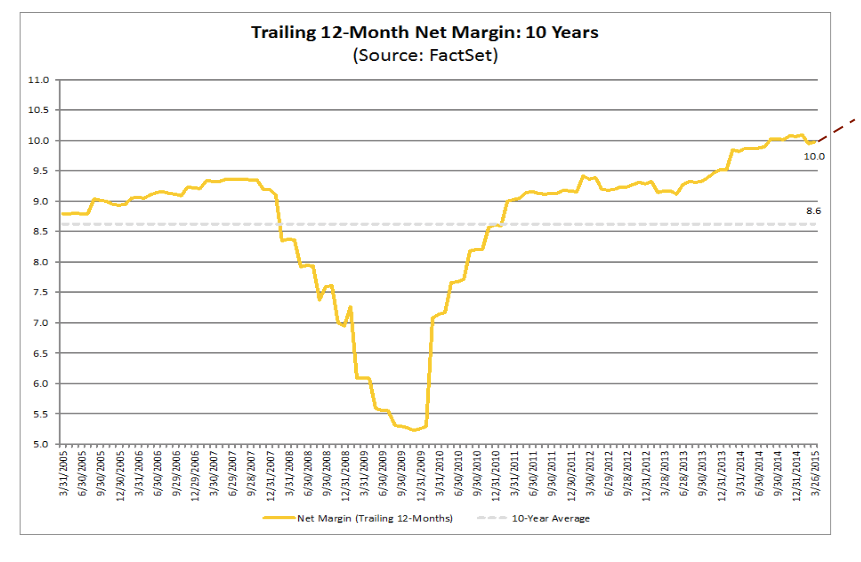
Margins have been increasing each year, so perhaps they will again this year. The flip side is that margins are at a high level already and a higher dollar and labor costs should begin to moderate margin expansion. So, there are reasonable concerns about these EPS forecasts.
It's true, moreover, that profits correlate with the stock indices. The last three significant bear markets in the past 35 years all corresponded with periods where profits fell (green shading; data from Robert Shiller).
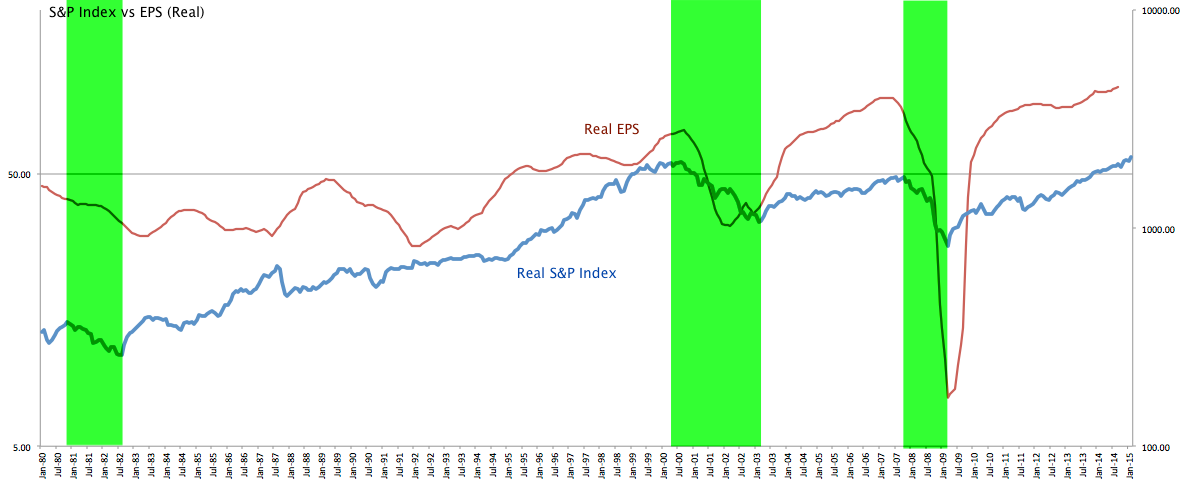
So the weakness in stock indices the past four months reflects, at least in part, concern that the bull market may be nearing an end.
The wrinkle is that's not the only possible outcome. In the same 35 year period, a decline in profits has more often corresponded with periods where stock indices simply paused or even continued higher (yellow shading).
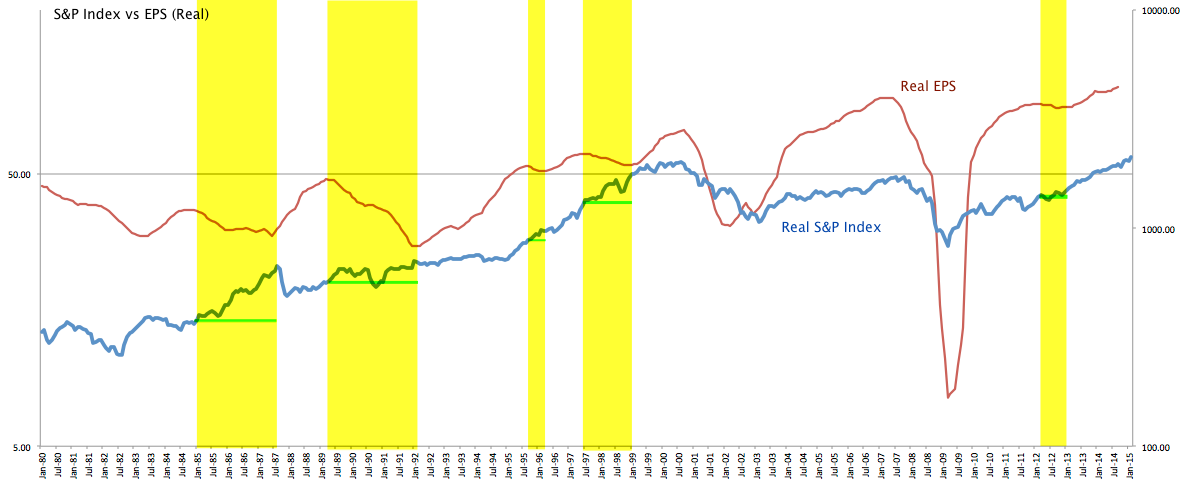
In other words, it's not that unusual for profits to stop growing during a bull market. The declines in profits in the mid 1980s and early 1990s were pretty severe, yet stocks continued higher for as long as another one to two years before a noticeable correction occurred.
In fact, the EPS decline between 1989-91 (when stock indices rose) and 2000-02 (when indices fell into a severe bear market) were proportionately similar.
The decline in profits between 1985-86 and now is also similar in one way: in both cases, a large drop in oil prices and a rise in the value of the dollar pressured earnings. Then as now, the assumption might be that consumption will continue higher as cheaper gas feeds into the rest of the economy.
One effect of declining earnings while stock prices continue to rise is that P/E ratios rise. The extremes in valuations in the late 1990s are well-known. What's interesting is that P/E valuations rose higher in both the mid-1980s (to over 21x) and early-1990s (to over 25x) than they are today (about 19.5x).
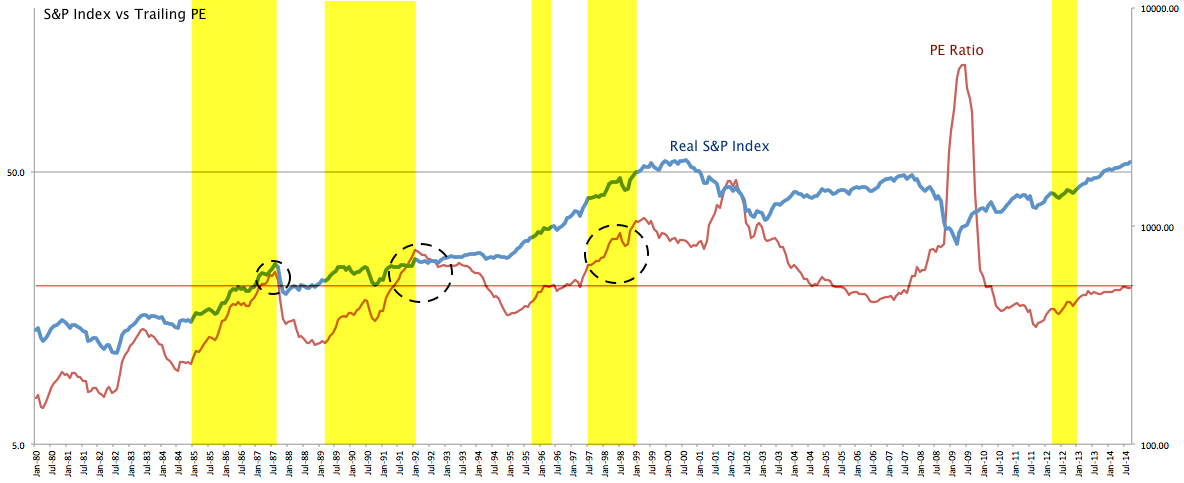
But on other valuation metrics, like Tobin's Q and Price/Sales, equities are already more expensive that in any of those prior cases, including the late 1990s. Again, the very high profit margins companies currently enjoy accounts for the difference between P/E ratios and these valuation metrics (data from Yardeni).
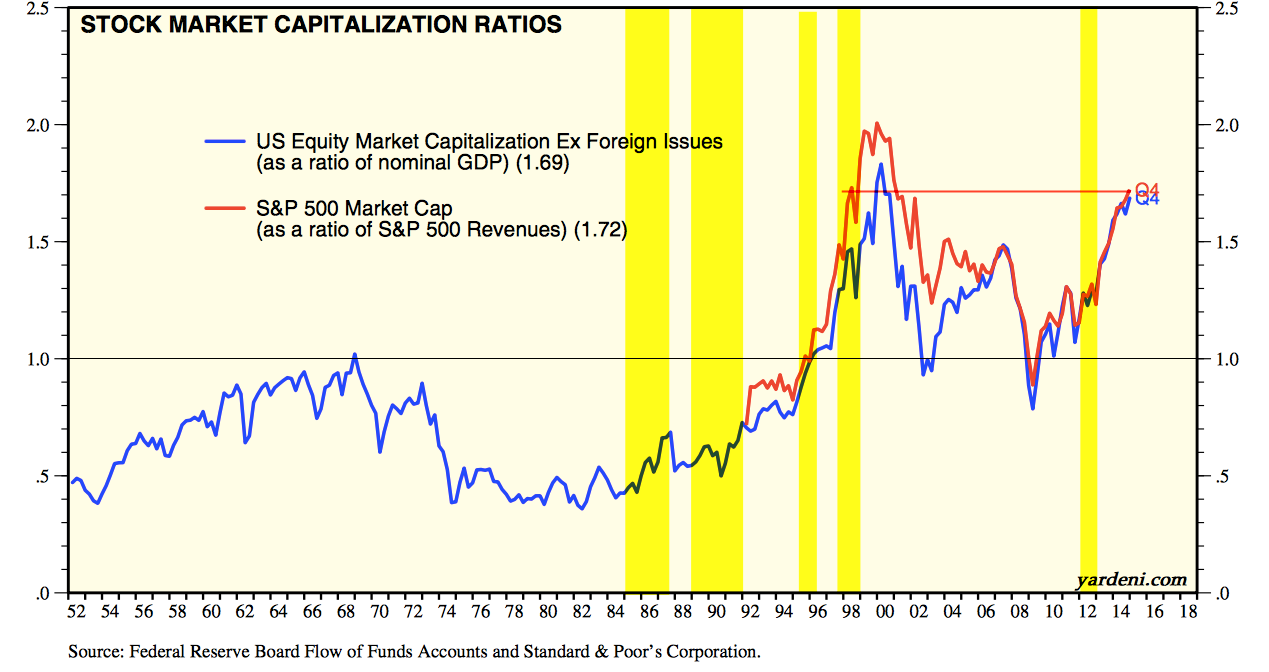
Net, the decline in sales and earnings in 2015 alone are not a risk to equity prices, especially if the decline is minor and transitory (e.g., as oil prices and/or the dollar stabilize). Equities have faced this exact situation in the past on a number of occasions and continued higher for a year or longer.
The more significant problem is valuations: P/E ratios have been higher but other metrics are already very stretched. At a minimum, high valuations combined with slow sales and profit growth most likely imply limited upside to equities until either growth is restored or valuation premiums decline.
In other words, the environment where equity prices struggle to produce gains will probably continue. That continues to be our leading hypothesis for the market in 2015.
